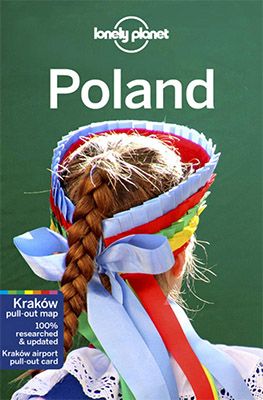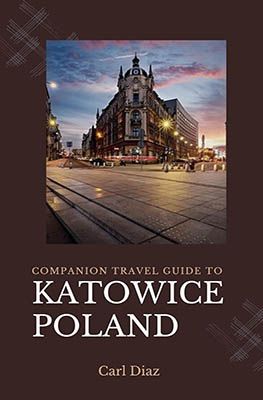To be honest: Katowice isn’t the first city that comes to mind when planning a city break. For many, the city is synonymous with heavy industry, coal, and steel. One might expect a grey industrial city dominated by mine shafts and chimneys. However, in recent years, Katowice has undergone an enormous transformation. It’s now a cosmopolitan, modern city that respects its past. Modern architecture goes hand in hand with industrial heritage in Katowice. This makes a city break to Katowice truly worthwhile.
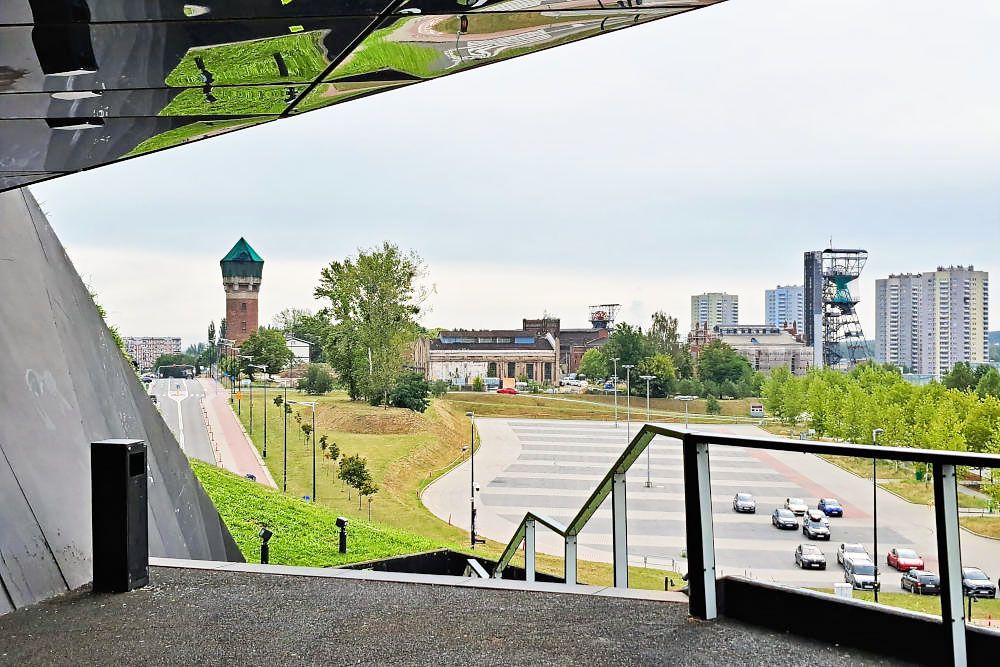
Highlights of a city break to Katowice
What does Katowice offer as a city break destination? Plenty, especially if you visit the following attractions. The city in the Silesia province surprised us in many ways.
Nikiszowiec Miners’ Estate
In the era of competing mines in and around Katowice, mine owners vied for the best miners. Even then, there was a “War for Talent”. The industrialist Georg von Giesches Erben wanted to create a village with modern amenities for his workers. This would allow his labourers and their families to live decently, increasing productivity and employee satisfaction.
Everything the residents needed was present in Nikiszowiec. Schools, a church, a post office, a bakery, a laundry, shops, and of course, a café. The laundry even had electric washing machines and dryers, unique for that time. The houses all had running water, a toilet, sewage, and ventilation.
We walk through this former miners’ village in a few hours. The central square and St. Anna’s Church are particularly iconic. There’s much more to tell about Nikiszowiec, so a separate blog about this miners’ village is forthcoming.
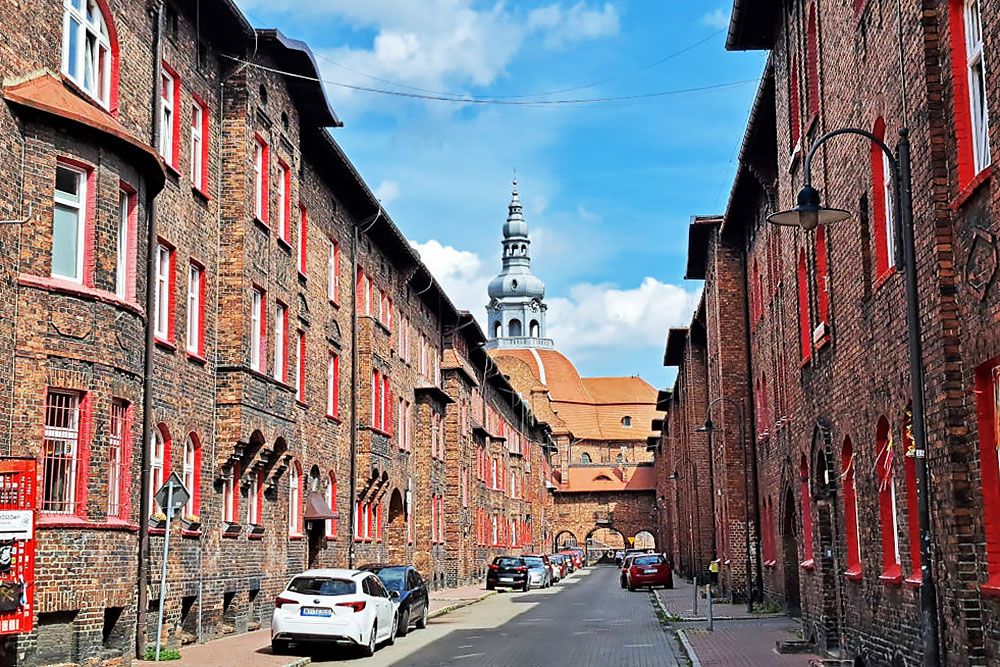
Guido Mine
We descend over 300 metres underground to visit the old Guido mine. We descend in an old-fashioned lift. Fortunately, the tunnels are quite wide and high. We never get a claustrophobic feeling in the tunnels. There’s also sufficient lighting. This makes the mine suitable for everyone to visit.
Our guide, whose grandfather and father worked in the mines, leads us around. We get an impression of the harsh conditions under which the workers had to do their jobs. Noise, dust, danger of collapse or suffocation – the miners experienced it daily. In an underground maze of tunnels, we quickly lose our bearings, the mine seems so vast. Until we come to a three-dimensional presentation. There we see the surface pale in comparison to some mines lying directly next to it. They are even much larger.
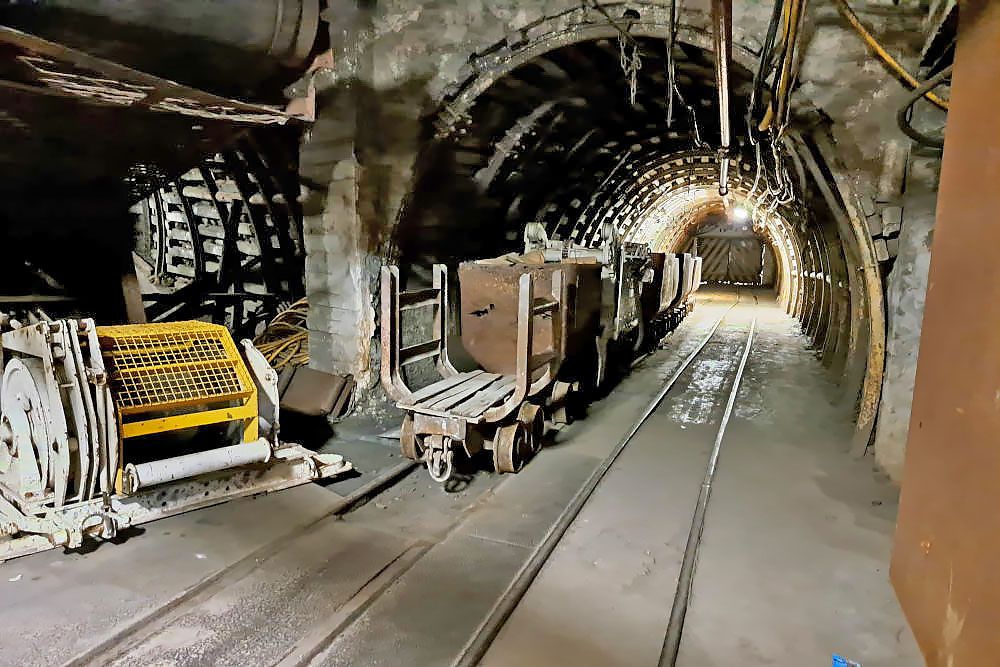
Street Art
Katowice has a growing reputation for street art. The city has several impressive murals and artworks spread throughout. In total, you can encounter over 100 artworks in Katowice.
The easiest way to see the best street art is to follow a special walking route. You can find these routes on the handy Katowice City Break App. The app is generally very useful as it contains all the information about the main attractions you’ll want to see during a city break to Katowice.
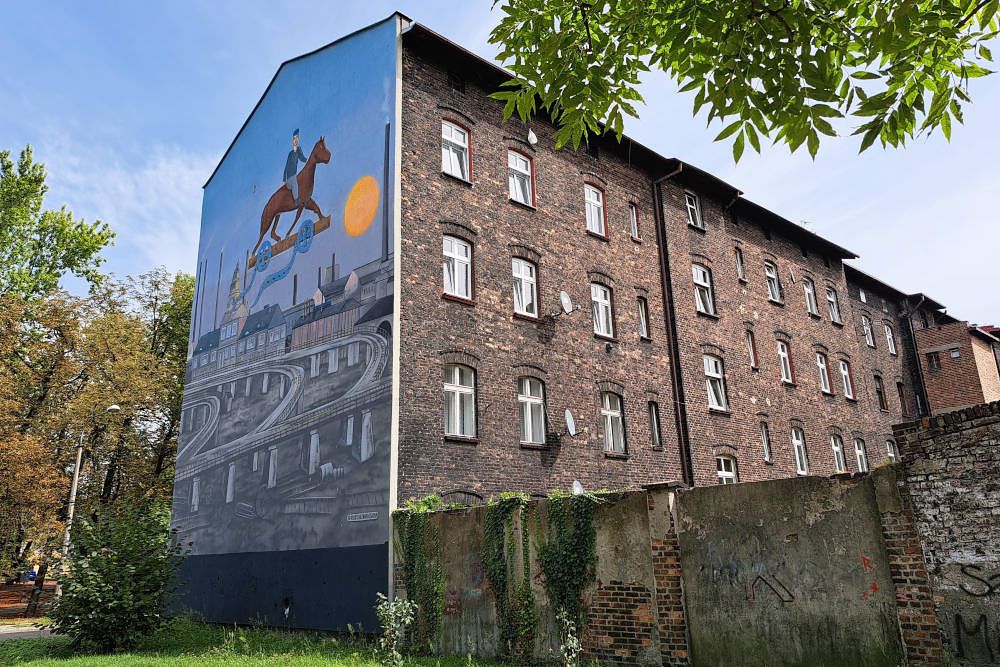
Zone of Culture
This district encompasses some of the city’s main cultural institutions. Former industrial areas have been transformed into modern cultural and business centres. A visit to the Zone of Culture is certainly one of the highlights of a city break to Katowice. These are the main places in the Zone of Culture:
Spodek Arena
This is a futuristic-looking multifunctional building. It looks like a large flying saucer (Spodek is the Polish word for saucer). The Spodek Arena is one of Katowice’s most famous landmarks. Since 1971, the hall has been the backdrop for sports matches, exhibitions, pop concerts, and other major events. Almost all world stars in sports and music have performed there at some point.
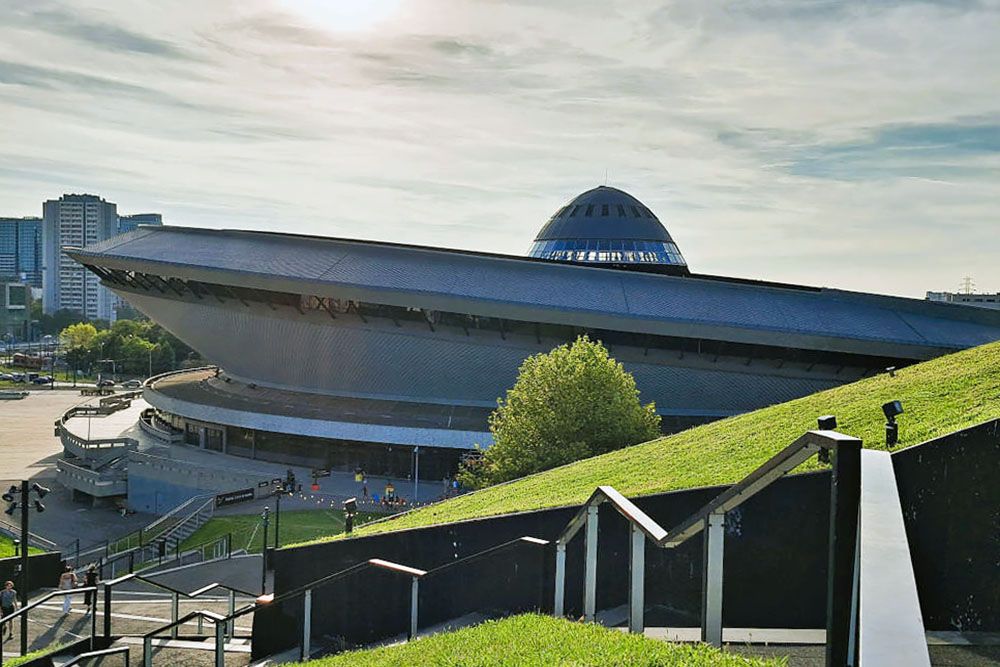
NOSPR Concert Hall
The NOSPR Concert Hall is an architectural masterpiece. This is one of the most advanced concert halls in Europe. The building combines modern elegance with acoustic perfection. With its unique wooden interior structure, the hall creates an intimate atmosphere that brings every note to life.
We visit the concert hall early in the morning. At that moment, a rehearsal is about to begin. The piano is being tuned one last time, violinists and cellists are already drawing their bows across their instruments, the timpanist is drumming on his timpani. It already sounds fantastic from above, how will it be when there’s an actual concert?
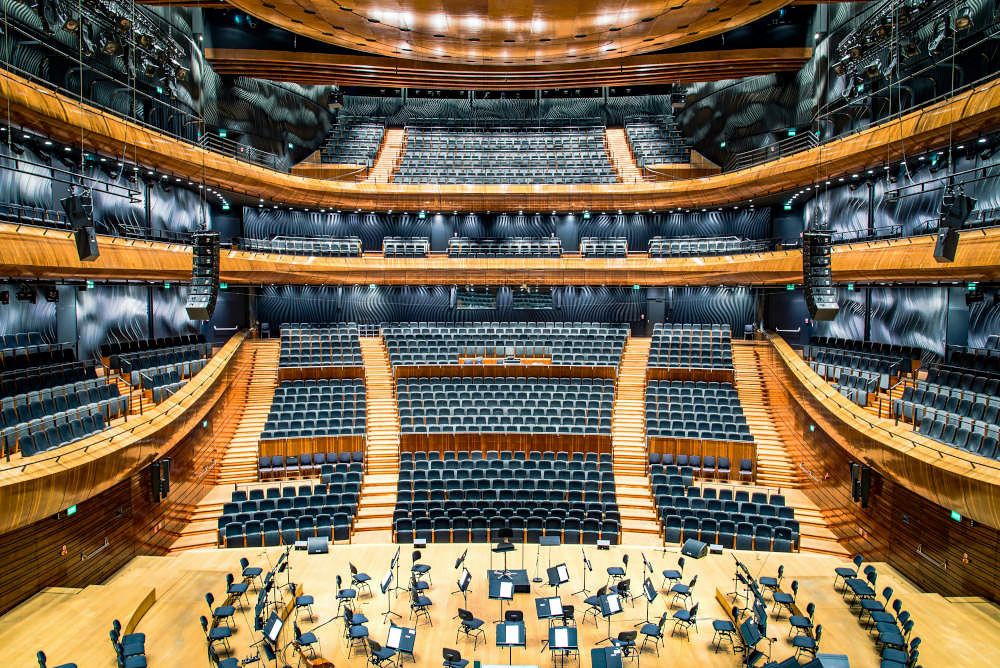
Silesian Insurgents Monument
The Monument to the Silesian Uprisings commemorates the participants in the Silesian Uprisings (1919-1921), who fought for the integration of Upper Silesia with Poland. The three “wings” of the monument symbolise the spirit of the insurgent fighters and their pursuit of freedom and independence. The monument stands on a square with a beautiful view of the Spodek Arena.
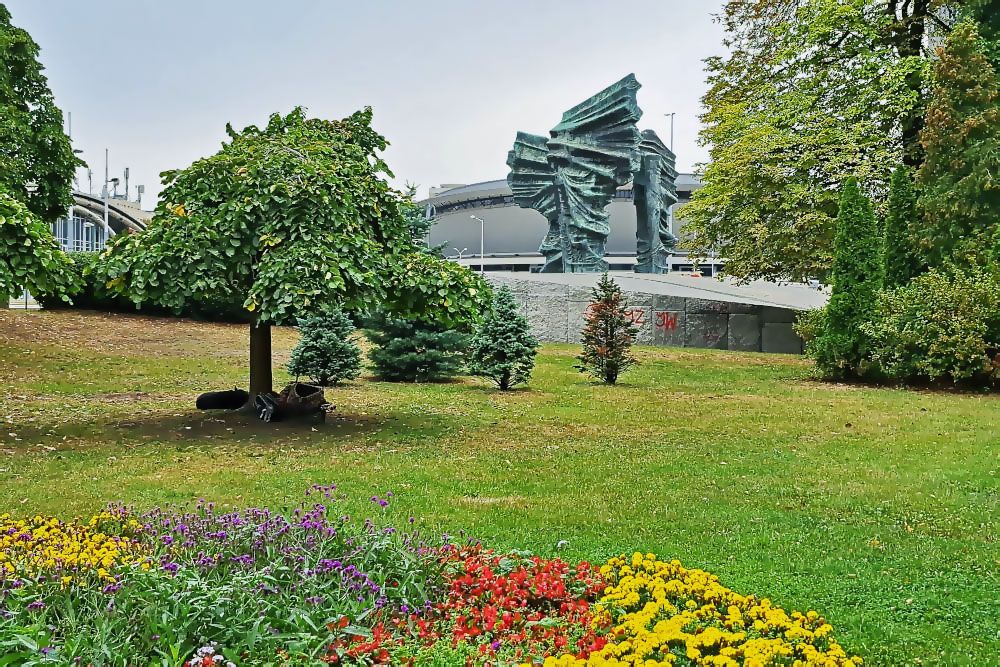
Statue of Jerzy Ziętek
Not far from the Insurgents Monument, we find the statue of Jerzy Ziętek. Despite his role in the post-war communist system, he enjoyed much sympathy in Silesia. He worked to improve the quality of life of the population. His practical approach and commitment to the region earned him the nickname “Father of the Silesian Region”. In Katowice, he was responsible for the construction of a city park, the stadium, and the large roundabout near where his statue now stands.
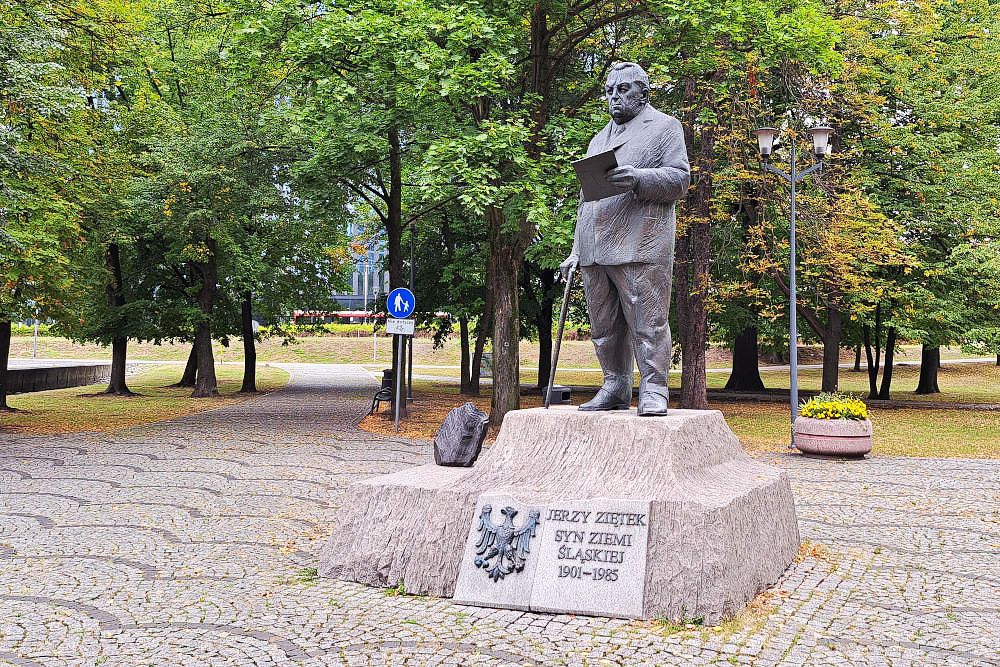
Roof of the Congress Centre
The Katowice Congress Centre is an architectural gem that stands out for its innovative design and functional beauty. It has a striking green roof that serves as a public park.
From the green roof of the congress centre, we have a breathtaking view of the Spodek Arena. The contrast between the sleek, modern design of the congress centre and the characteristic, dome-shaped Spodek Arena makes for a beautiful view. We’re not the only ones who find this location ideal. Many young people chill here, have a drink, and wait for a beautiful sunset.
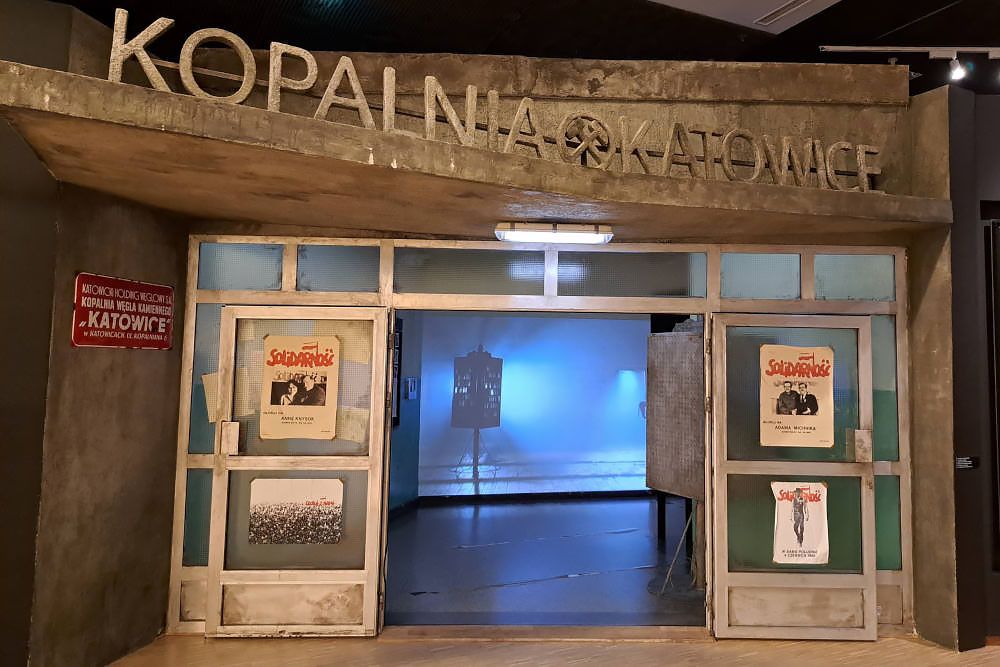
Silesian Museum
The Silesian Museum is an impressive cultural institute. This is not only due to its extensive collection and exhibitions but also its architecture and location. The museum combines the city’s industrial heritage with modern art and culture. This makes the Silesian Museum one of the highlights of a city break to Katowice for us.
The museum complex is partially built underground. This is a symbolic reference to the underground mining that took place here. The site also contains restored mining buildings and an observation tower. Unfortunately, during our visit, the tower is closed for renovation. So we have to miss out on the beautiful view from the tower.
We are particularly impressed by the exhibition on the history of the Silesia region. We meander through an interactive exhibition about life from centuries ago to the time after World War II in this region.
The collection of so-called “amateur art”, made by miners and workers, is particularly special. These miners were largely self-taught. The works range from paintings and drawings to sculptures and woodcarvings. They offer a touching glimpse into the lives of the workers in the mines.
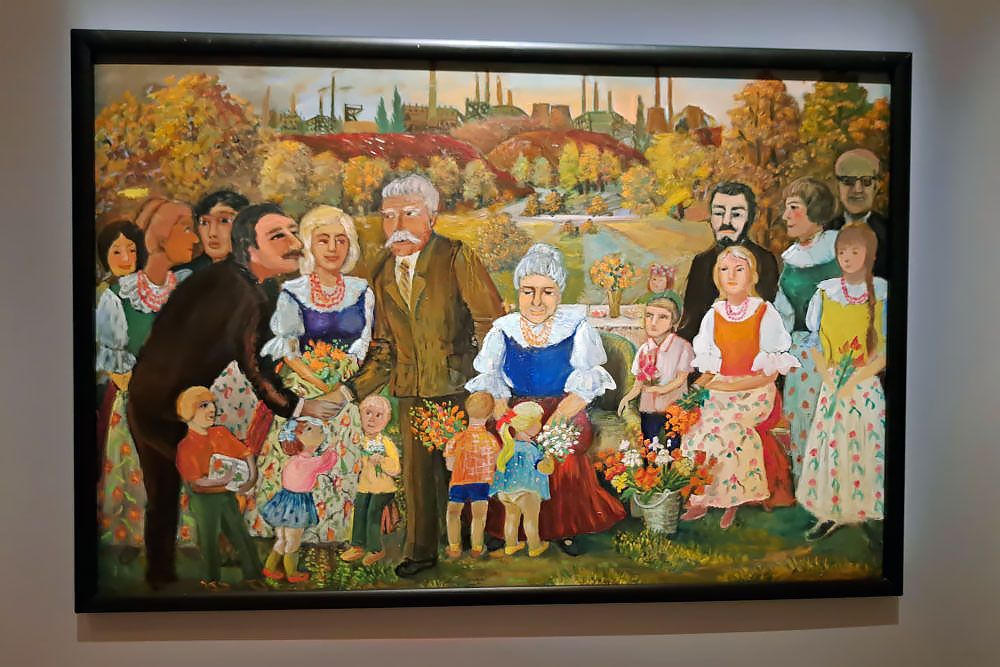
Neon Route
The Neon Route offers a unique and colourful journey through Katowice’s history, bringing iconic neon advertisements from bygone eras back to life.
During a walk along the route, we pass carefully restored neon lights that once illuminated the streets. The various neon objects are a visual treat for us, allowing us to experience the city in the evening in a different way.
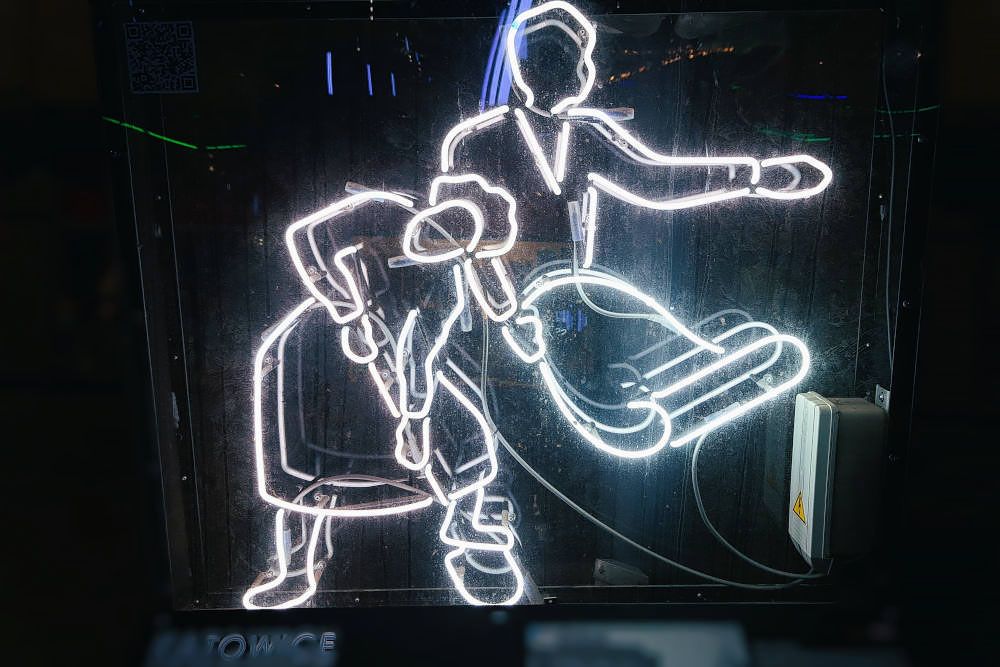
Tyskie Brewery
The Tyskie Brewery is one of Poland’s oldest, largest, and most famous beer breweries. The brewery is located in Tyche, a village just outside Katowice. You can reach it quickly by train. During the tour of the historic buildings, we discover the secrets of the brewing process. We learn everything about the carefully selected ingredients and see how craftsmanship has been passed down through the centuries.
The brewery complex is enormous. Many beautiful 19th-century buildings form the heart of the brewery. They stand in stark contrast to the modern bottling plant across the road. In that building, the bottles are filled and labelled, ready to find their way to thirsty customers. We’ve become quite thirsty by now too. Fortunately, we get a deliciously cool beer in the atmospheric vaulted cellar.
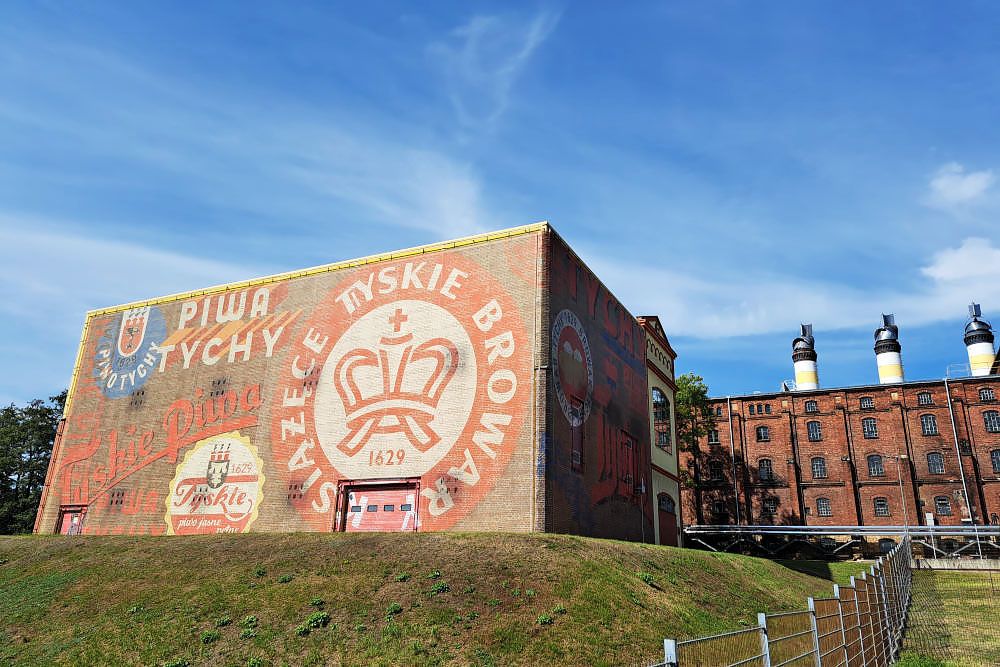
Pszczyna castle
Pszczyna is a charming town not far from Katowice. It has a cosy and historic centre. But Pszczyna is especially known for the impressive Pszczyna Castle. The castle is one of the best-preserved aristocratic residences in Poland. It’s not for nothing that its nickname is the “Versailles of Silesia.” Originally a medieval fortress, it was converted into a beautiful neo-baroque palace in the 19th century.
The castle has an impressive interior. The lavishly furnished rooms have largely been preserved in their original state. We walk through the building in about two hours. Thanks to the excellent audio tour and the furnishings, we get a good picture of the life of the aristocracy in the 19th and early 20th centuries.
From the castle, we walk through the gate straight onto the charming market square. Colourful townhouses and the historic town hall surround it. This medieval town has atmosphere and history. This makes it a nice contrast to the relatively young Katowice.
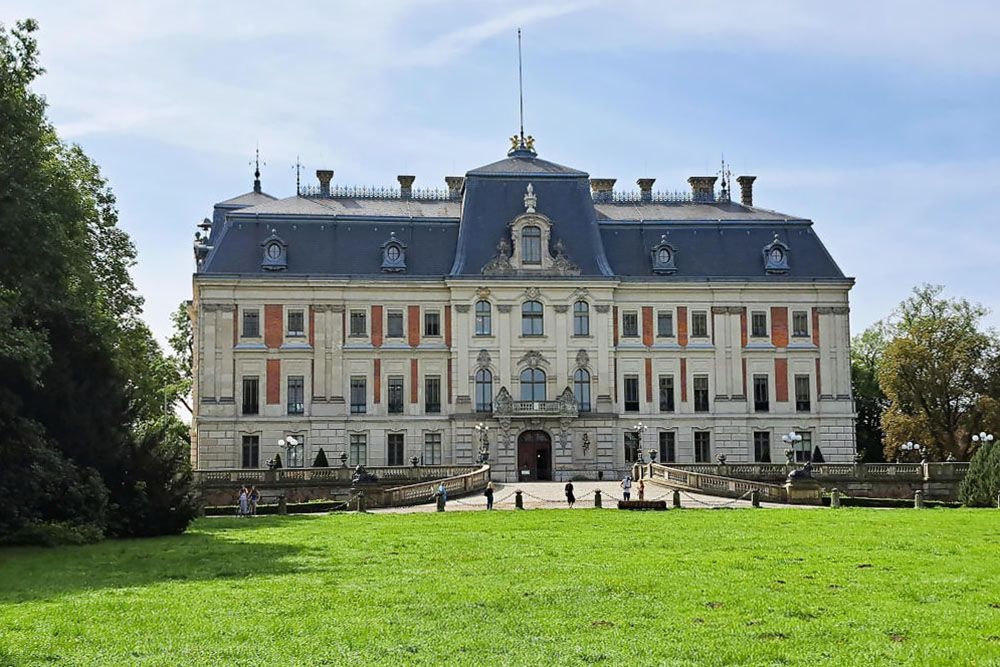
Base for an impressive visit to Auschwitz
About 30 years ago, we visited Auschwitz for the first time. The impressive images of the extermination camp are etched in my memory. A visit to Auschwitz should really not be missed when you make a city trip to Katowice. The concentration camp offers a profound and poignant reminder of the horrors of the Holocaust. A few years ago we visited Auschwitz for a second time and wrote this blog about our visit.
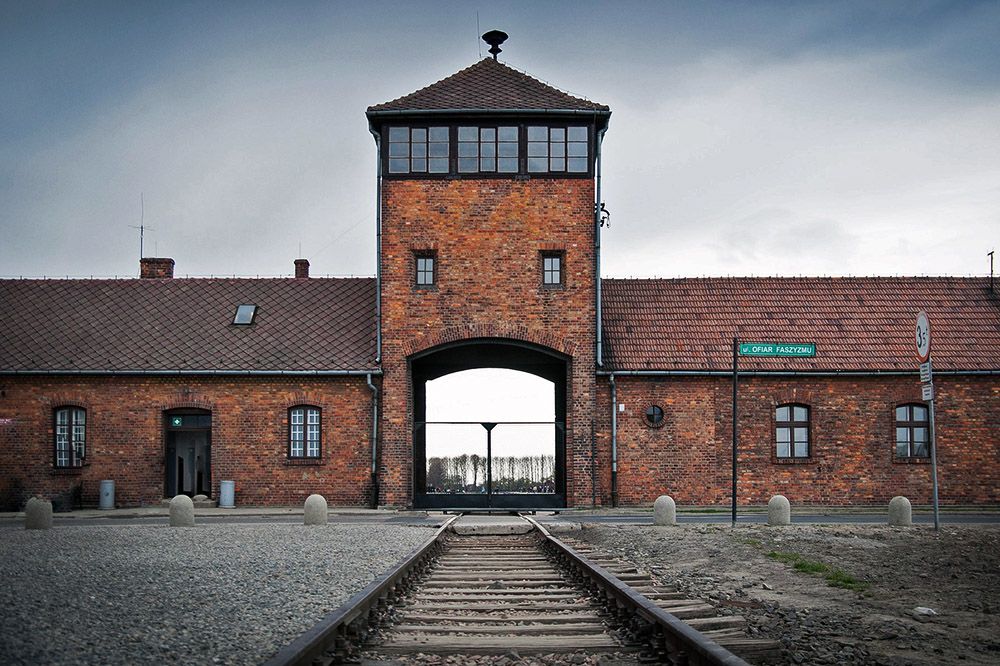
Katowice: starting point for an international city trip
In three days, you’ve seen Katowice and the immediate surroundings. But the nice thing about this city is that other places are easily accessible by train or car. If you want to make an international city trip, Katowice is therefore a perfect starting point. You can quickly travel to the beautiful Polish city of Krakow, but also to cities like Vienna, Bratislava, Prague and Budapest. Especially if you go by train, you’ll make an unforgettable journey through different landscapes. An ideal travel plan for an Interrail holiday!
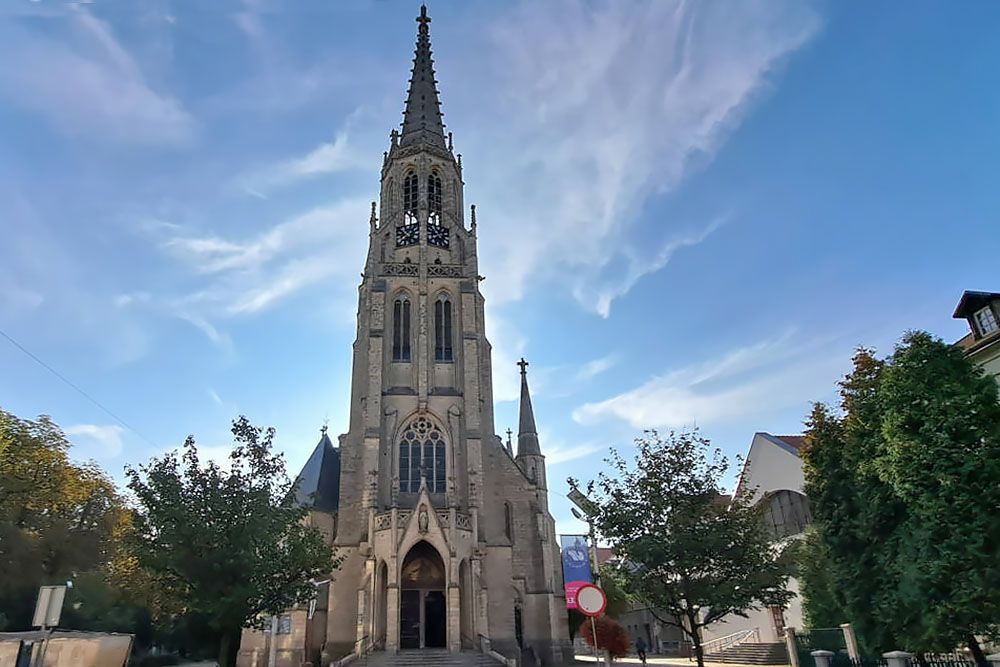
A city trip to Katowice is surprising
For us, the city trip to Katowice was an ideal opportunity to experience how a former industrial city has developed into a beautiful travel destination. We were able to discover many sights. Katowice is a relatively young city. But in the nearby area, there are several medieval towns in a lush green landscape. That makes a city trip to Katowice certainly worthwhile!
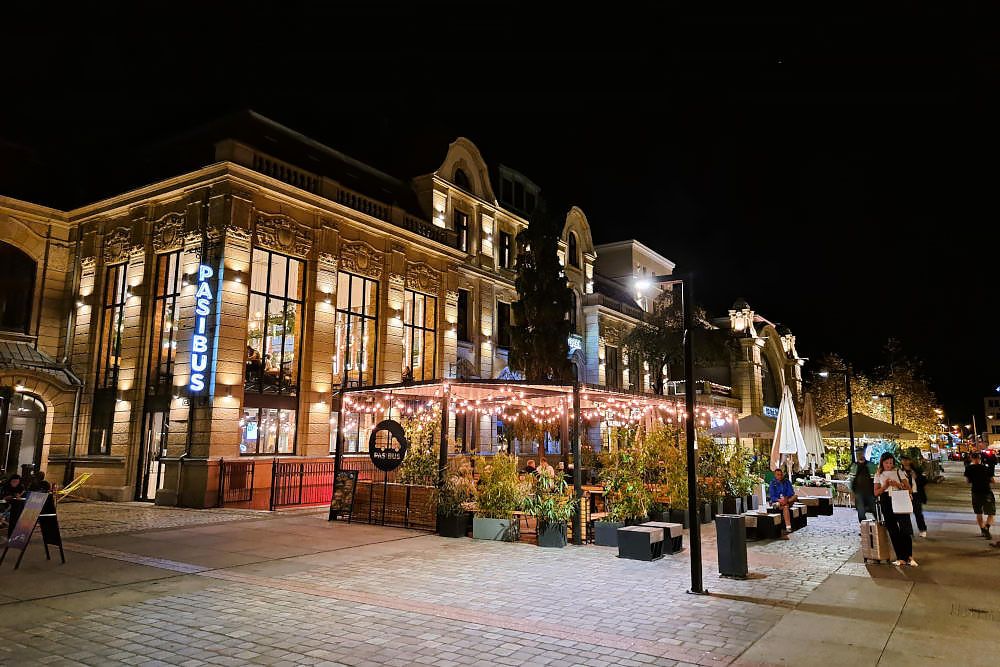
Frequently asked questions about a city trip to Katowice
Katowice is located in southern Poland, in the province of Silesia. The city is about 80 km west of Krakow.
Flying is the fastest and easiest option to reach Katowice. There are direct flights from various European cities to Katowice. Katowice-Pyrzowice airport is about a half-hour drive (outside rush hour) from the centre. You can take a rental car or the bus.
As a former mining and industrial city, Katowice has undergone a transformation. Now it's a city with modern architecture and industrial heritage. The most beautiful sights are the Silesian Museum, the NOSPR Concert Hall, the Guido Mine, the miners' village Nikiszowiec, and the routes along beautiful street artworks. Just outside the city, you'll find the Tyskie Brewery and various medieval towns such as Pszczyna, among others.
Mariacka Street is filled with restaurants, bars and cafes. You'll find plenty of good restaurants there. The same applies to the nearby Dworcowa Street. When you're in the former miners' village Nikiszowiec, you shouldn't miss a visit to the excellent restaurant Śląska Prohibicja (book in advance!). There you can enjoy Silesian dishes with a modern twist. The ambiance is also beautiful. Finally, the staff is extremely attentive and hospitable.
These are other well-rated restaurants in Katowice:
We stayed at the Q Hotel Plus Katowice. A modern and excellent hotel with an outstanding and extensive breakfast buffet. The hotel is a few minutes' walk from Mariacka and other streets in the centre. You'll find the train station 400 metres away. Tip: book a room at the front. At the back, you may be bothered by the many trains passing at night.
Other excellent accommodations in Katowice are:
- Best Western Hotel Mariacki Katowice
- Qubus Hotel Katowice
- Hotel Diament Plaza Katowice
- Stawowa 13
- Mercure Katowice Centrum
Is your choice not among these? Then take a look at these hotels in Katowice.
Visit Pszczyna Castle, the lead and silver mine in Tarnowskie Góry (UNESCO World Heritage Site) and the Błędów sand area. This is the largest sand desert in Europe. Impressive and chilling is the visit to the Auschwitz concentration camp.
We visited Katowice at the invitation of the Katowice tourist office. We have independently and objectively compiled the content of this blog based on our own impressions.

